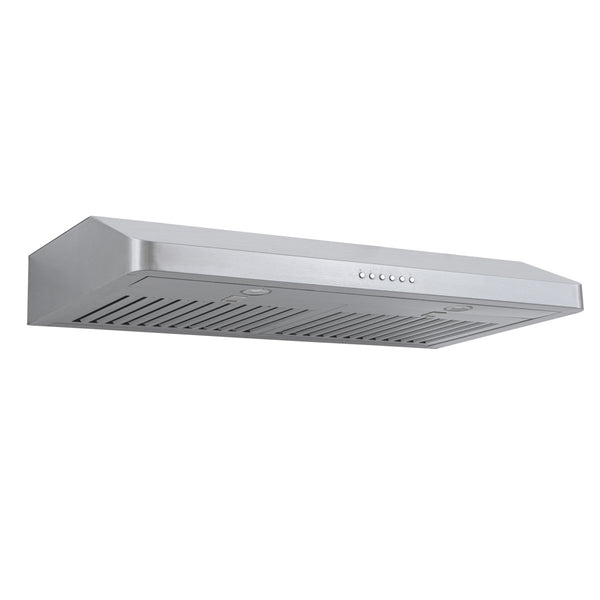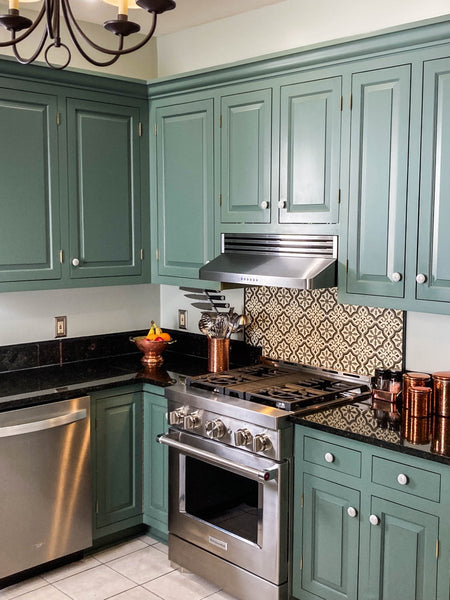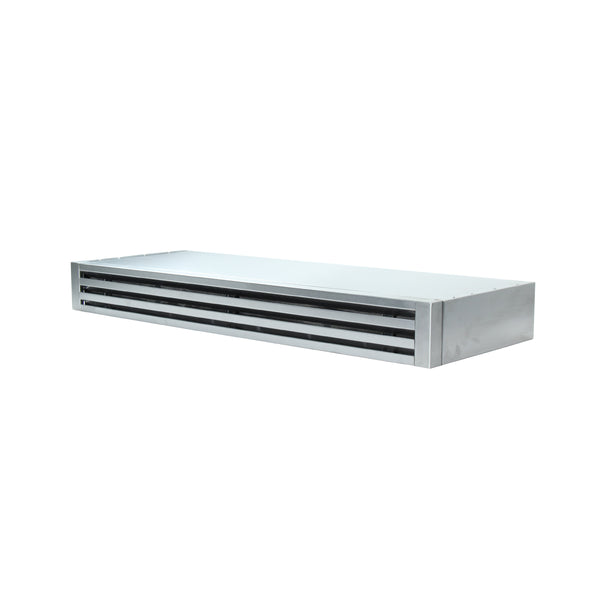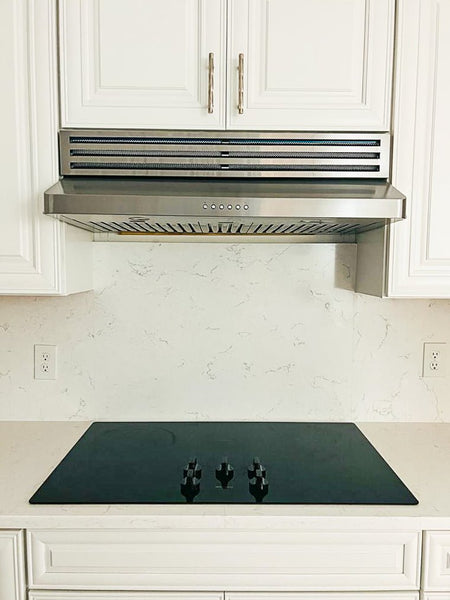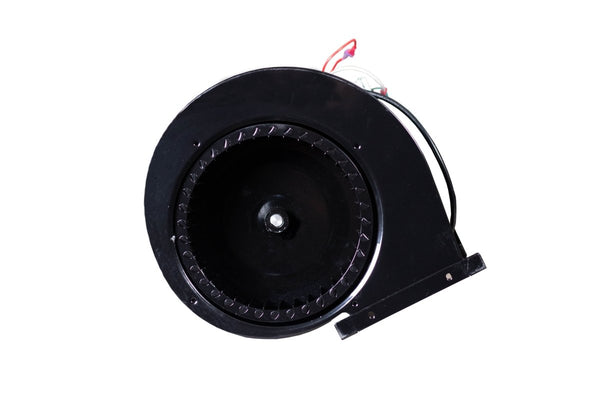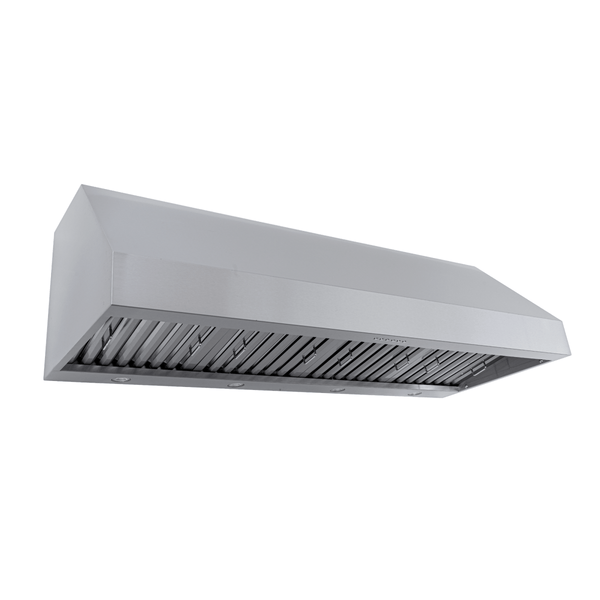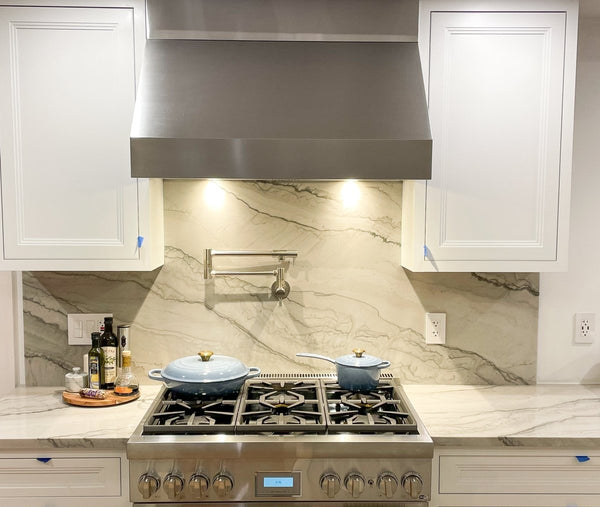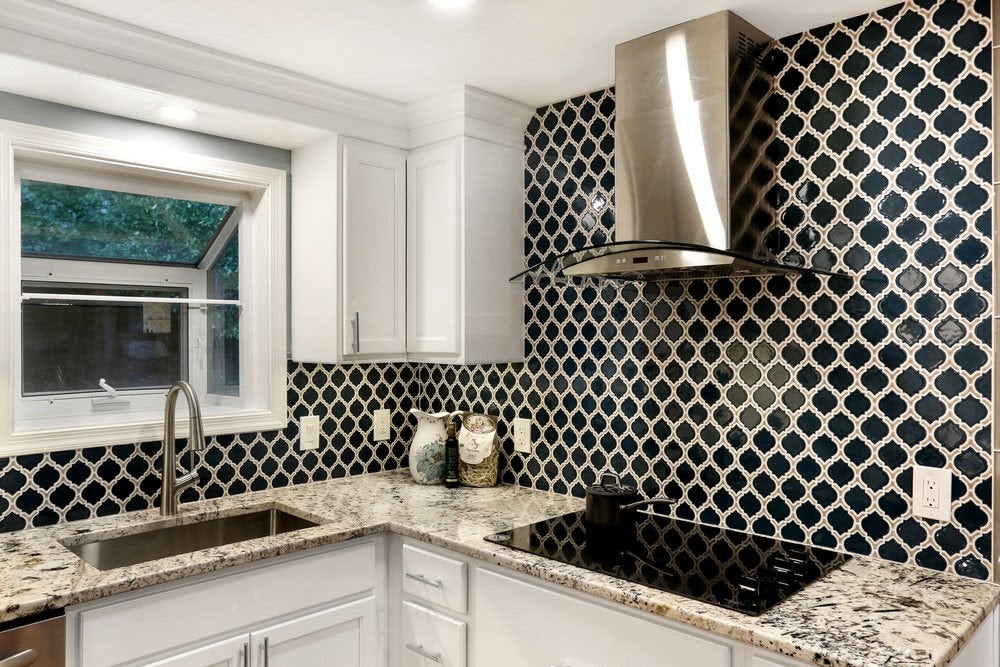You have two options for your kitchen range: gas or electric. Electric stoves are most popular in smaller kitchens while gas stoves are common in larger homes. If you cook often and need extra power, a gas stove is best for you.
Gas cooktops can reach up to 300,000 BTUs for residential homes. When stoves get that powerful, it is always recommended to buy a vent hood for your kitchen. You want effective ventilation since your stove produces a lot of heat and cooking exhaust.
But, not everyone has a gas cooktop. Electric stoves are popular, especially in apartments and condos. Often, people wonder if an electric stove needs a vent since it’s much less powerful than a gas cooktop. We sometimes have customers call in asking if they need a vent hood for their electric stove.
The truth is that you should consider a vent for your electric stove. Even if you cook one or two times a week, a vent hood can be beneficial for you. It will clean your indoor air and improve your indoor air quality. For electric stoves, we recommend a range hood of at least 600 CFM.
Even for the largest electric stove, you probably need at most 1000 CFM. If you’re unsure about how much CFM you need, check out the video below!
With gas ranges, we recommend ducted range hoods in all kitchens. We also recommend ducted range hoods with electric stoves. They are incredibly efficient.
Vented range hoods are more powerful than non vented range hoods. But, with an electric cooktop, you don’t need tremendous power out of your hood. So, a ductless hood could be a great option for you. Ductless hoods are less efficient at removing cooking odors. But, they’re an affordable and reliable option for those who live in an apartment or condo.
In an apartment, you may not be able to install a duct for your hood, so ductless will be your only option. For a list of some of the best ductless range hoods on the market complete with reviews, click here.
Why do you need to vent your stove?

There are several reasons why you need to vent your stove with a range hood.
- A range hood, ducted or ductless, improves your indoor air quality.
According to the World Health Organization, 3.8 million people die from indoor air pollution each year. Polluted indoor air is particularly dangerous to children. Fifty percent of children under five years old who die from pneumonia died due to poor indoor air.
- It vents strong smells and chemicals from your indoor air to the outside of your home.
Range hoods filter both cooking exhaust and chemicals such as carbon monoxide from your home.
A ducted range hood takes most of the pollutants in your kitchen and removes them from your house. This is the safest means of ventilation.
In contrast, a recirculating range hood pulls your kitchen air through charcoal filters. Then, it circulates the air back into your kitchen. The charcoal filters neutralize odors and catch some contaminants. But, they are not as effective as moving the air outside your home.
- It keeps your kitchen cabinets, walls, and ceiling from accumulating heavy grease and dirt.
Without a range hood, steam, smoke, and grease droplets travel upward to your kitchen cabinets. Grease will also gather around the kitchen on the walls and surrounding surfaces.
With a range hood, all the smoke and steam gets pulled through your duct or charcoal filters. It doesn’t scatter throughout your kitchen. As long as you have the right-sized hood and you mount it at the appropriate height, it will clean your kitchen air with ease.
- A range hood fan is a conversation starter, especially when it comes to selling your house.
Whether you are sitting down to dinner with your family, hosting a party, or selling your home, the range hood is a fantastic conversation starter. It is a beautiful and functional kitchen appliance that will leave your guests in awe.
- It removes smoke and steam from your kitchen for years to come.
Compare a kitchen exhaust fan to your typical electric fan. Unlike an electric fan, your range hood is mounted above the range for maximum efficiency. It will last you at least a decade. Not to mention that variable speed range hoods offer you incredible flexibility. You can also duct yours to the outside to completely remove the harmful contaminants.
Is a stove vent required by code?

Range hoods are not specifically required by code in residential environments. But, every range hood must abide by safety standards. For specific range hood code requirements in individual states, click here.
Most states outline requirements for commercial vent hoods, which include but are not limited to:
- A commercial hood must duct to the outside.
- It must use stainless steel ductwork.
- It must be mounted at least 24” away from the cooktop (We recommend 28” for maximum efficiency).
These requirements vary by state. Generally, if you’re not putting yourself at risk by producing a lot of cooking exhaust or chemicals, you won’t need a range hood.
If you live in an apartment or condo, the landlord may require a vent hood of a certain CFM or mandate makeup air. Be sure that you are abiding by all their requirements. If they don’t require a hood, maybe you can convince them to install one at your place.
How far can you vent a range hood?
You can vent a range hood using about 30’ of duct max. This rule applies to wall range hoods, island range hoods, under cabinet hoods, downdraft hoods, inserts, and outdoor hoods. Any longer than 30’ and your kitchen air won’t make it to the outside.
We also recommend that you use no more than two elbows, since these drastically increase air resistance in your duct system.
For more helpful tips on ducting your range hood and choosing the right size of duct, check out this complete guide.
CFM for Electric Cooktops
To calculate the CFM of your electric cooktop, take the total British thermal units (BTUs) of your cooktop and divide that number by 100. This represents the least amount of CFM that you need for your range hood.
For example, if your electric stove has six burners that produce 8,000 BTUs each, your stove produces 48,000 BTUs total. Divide that by 100 to get 480 CFM.
In general, we recommend adding 100-200 CFM to this amount depending on your cooking style. We want you to have flexibility while cooking and never be left asking for more power from your range hood. This will deal with any excess grease that a lower-powered range hood may not capture.
With a hood that is a little more powerful than you need, you can use it at lower speeds frequently or even all the time. This will make it last longer and it will be much quieter as well so you can enjoy a comfortable experience in the kitchen with your friends and family.
For more information on calculating CFM for your range hood, click here.
Recap
In summary, buy a range hood for your electric stove. It will not only clean your air, but it will also help you cook. Bright LED lights and a versatile control panel make your job easier in the kitchen. Venting your electric range hood is ideal, but not necessary.
For more range hood content, check out our articles below!
Related Articles
5 Best Proline Wall Range Hoods
Best 600 CFM Range Hoods and Buyer’s Guide
Best 900 CFM Range Hoods and Buyer’s Guide
